Creating and maintaining meaningful customer relationships in digital times
Creating customer relationships is only the beginning, to keep customers happy you need to nurture them

It’s not enough to create customer relationships, maintaining them is equally important for success today. With so many options available a few searches and clicks away, creating a good customer experience is crucial to keep them.
Why is managing customer relationships important?
According to a Deloitte research, “...client-centric companies are 60% more profitable compared to companies not focused on the customer”. This is a clear indication that having good relationships with the customer increases profits which may either come by retention and/or more customers with word of mouth about your good customer experience.
Maintaining good customer relationships doesn’t end at sales or exclusive to support. It’s the whole experience customers get right from when they visit your website to talking to a sales rep to getting services to after-sales support. And the most important of all, the product. Having a great product that delivers on customer expectations is half the battle won.
Customer relationships in the digital age
Think what you will of Jeff Bezos’s approach to market share, the man knows how to expand into almost anything. And he didn’t do it by aggressive sales tactics or hiring the best people alone. If you’ve ever faced an issue when using Amazon, you know that their customer service is undeniably good. I mean they don’t leave a spot for complaining. ‘Unsatisfied with your product? We’ll replace it. Unreturnable product but it’s bad? We’ll refund.’ Who wouldn’t be happy with customer service like that?
And it’s not just Amazon, a lot of eCommerce companies today are leaning towards good customer service that was rarely ever seen in the 90s. Yet, on the other hand, if you’ve ever faced an issue with an everyday product from a local store, you’ll see that their customer service is not as prompt or in rare cases, nonexistent. You could argue that eCommerce sites need to be prompt to not lose on huge LTV from customers and that B2C products can afford to be lax. But hey, if I use a daily product and it’s bad, I’ll pick another brand the next time as will everyone else who values their money.
One horrible experience is enough to lose a customer
I once tasted a new ice cream brand in the market, let’s call it ABC. It was decent packaging and the local store had decked their fridge with many flavors. So much stock so it obviously must be good I thought. I couldn’t have been more wrong. The ice cream tasted really bad, more artificial than the shopkeeper’s words praising it. There’s an easy explanation for stocking so much inventory—high margins. The point here is that I or anyone in their right mind will never try a product from a brand again after just one horrible experience.
When you think of customer relationship management, usually sales and marketing come to mind. You acquire leads, create contacts, send quotations and invoices till leads finally become your paying customers. But between these transactions and reports, there are softer aspects that go into creating and maintaining lasting relationships with your company’s customers.
Connecting with customers in a meaningful way is different for both B2C and B2B businesses. Since a large part of our audience is B2B, we’ll focus on that more in this blog. It’s important to note that building relationships may or may not work in service-oriented businesses where customers can switch to cheaper options even if you’ve helped them set shop initially.
Understanding customer needs
To sell, you need to know what you’re selling. It’s never just your product and services. Many customer needs are specific to a solution but there also common needs that have to be met before thinking about products. Fairness in treatment, transparency in pricing and conditions, having options or varieties, detailed product information, good support, etc, are common customer needs that every product should offer.

Solve their problem, don’t sell, yet
Aggressive salespeople many times go straight for the sell and talk about the product/company/service. Half an hour later both are clueless and the would-be customer says he’ll think about it. Now, we all know what that means. This brings me to the point here, merely selling the product doesn’t build a relationship, you need to understand your customer’s problems first then talk about how you and your product/services can help the customer. Regardless of software solutions, machinery, logistics, understanding the customer’s problems is the first step to sales, and by extensions, a meaningful customer relationship.
Relationship after sales
Your salespeople did a great job, the customer is in, that it, right? You would be if it were the 1900s. Brands today are very dedicated to providing tailored experiences suited to the customer. In B2B, maintaining relationships is extremely important. Best way for this is to take care of your customer’s every need relevant to your product or service. If there are areas that you can’t address right away or never will be able to, convey them to the customer with confidence and let them know you’re there for anything else. Flat out saying no or denying their needs brings up a bitter taste that lasts long.
Having dedicated support staff is not out of the question, especially when your business is in the software industry. For physical products, AMC, installations, free on-site repairs are common ways to inspire confidence and loyalty.
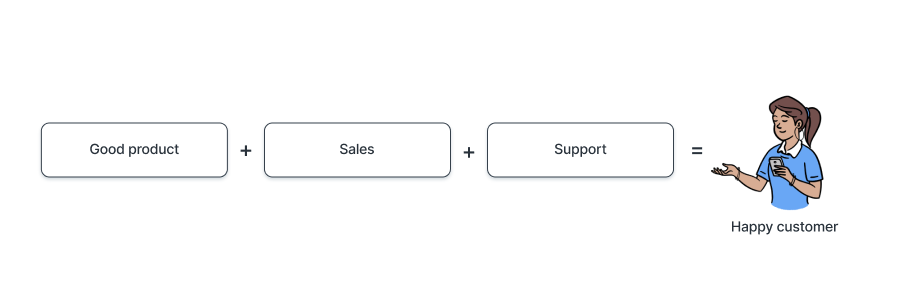
5 ways to build relationships with customers
In India, there’s a regional population called Gujaratis. They have a saying which goes “dhanda dharam hai” translated, it means “trade is religion”. You must be wondering what that has to do with the topic of this article. Well, it’s remarkable to observe how they treat their business partners. They have a tightly knit community of people that help each other in need, either by giving credit or any other way, thereby creating and strengthening the relationships. And that’s our takeaway here, relationships are everything in B2B. Of course, you can’t disregard factors like brand loyalty, emotions, design, product, etc but in strictly B2B where the customer is a business, relationships play a huge role.
So how do you build relationships with your customers? One thing to remember is that there is a person on the other end too, sometimes there may be many.
With that in mind, let’s take a look at ways to build relationships with customers.
1. Face to face (or at least call)
Talking face to face was and continues to be the most effective way to build relationships with anyone and that includes B2B clients. Taking the time to meet someone personally shows that you give them importance and respect. A lot of businesspeople still give importance to a ‘handshake deal’. Since this isn’t always possible, the next best thing is video calls or phone calls.
2. Prompt communication
Sometimes responding to emails gets delayed, sometimes orders too. Delays happen due to various reasons out of a business’ control but how you handle the situation is under your control. Always being prompt with your communications either via email or phone calls and explaining to your customer as to why delays happened or a faulty item was delivered often calms down an angry customer. Nurturing slightly personal relationships here helps since they’re less likely to blame you or lose temper and stop being your customer.
3. Take feedback
Both positive and negative feedback is important to grow your company and product. Customer feedback should be a large part of your decision making since they’re the ones that use your products. Maintain what’s good, improve what’s not, but always take feedback on how your customers are feeling about what you delivered. Not all customers are vocal, some may silently churn after being unhappy, so it’s your (team’s) job to actively ask and listen.
4. Reward loyalty
We all know how grocery stores reward and attract customers with loyalty points. But B2B engagements are unique and needs can be very different and purchase items are very transactional. But that doesn’t mean there’s no place for loyalty rewards. By giving loyalty rewards to customers who bring you a lot of business, you make them happy. They’ll be more inclined to refer others and can go on to be your voice in their circles.
5. Give good customer service
In the end, good customer service cannot be compromised. While sales brings the customer and remains the key touchpoint in B2B, a couple of bitter service interactions is enough for your customers to start looking for other options.
It all boils down to customer success
In the end, only one thing matters—the customer’s success. The ultimate goal of your products and services should be to ensure the customer gets what they want and solves their problem. Reaching this stage involves going through many stakeholders, phases, and weeks/months. Once your implementation/installation/manufacturing is complete, ensure to ask the customer if they’re satisfied with what you provided.
At Frappe we build customer relationships right from sales to onboarding to support by engaging with the customer and solving their needs specific to our product.
Managing customer relationships with a CRM system
Now, let’s see how CRM features help in managing customer relationships.
Follow-ups with leads
By setting a next follow-up date on leads, you ensure that there’s constant communication between your company and the potential customer.
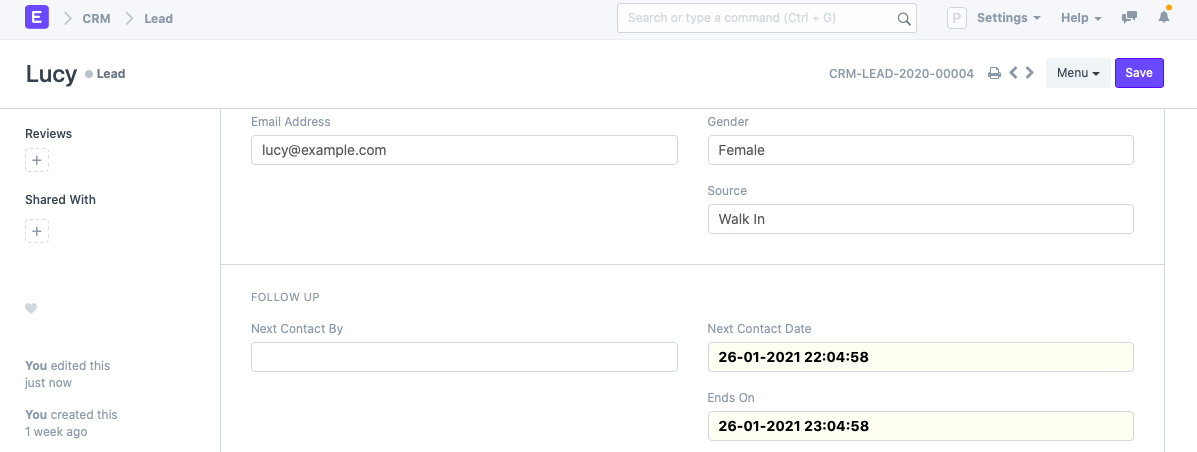
Customer grouping
By grouping customers, you can assign default credit limits, price lists, payment terms, and accounting details. Allowing credit is a common B2B practice but you don’t want to allow unlimited credit to any customer so you should set default limits to groups or individual customers. You can create single or group customer groups as per your needs.

Inactive Customers
After a first purchase, if a customer is dormant, you’re kind of wasting the efforts put in to acquire the customer. Using the Inactive Customers report, you can see which customers aren’t buying from you anymore. You can set up the number of days since the last order in the report, say 60 days. Now you’ll see the list of customers who haven’t ordered anything from you in the last 60 days.
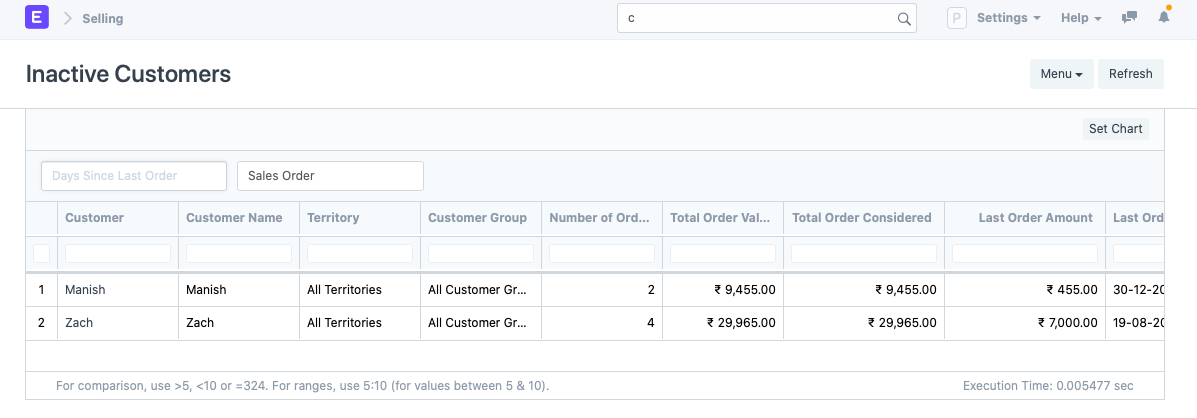
Random surveys for mood checks
You can create web forms to record customer responses and store them in a doctype. Web forms in ERPNext are much more powerful than the free options available in the market. You can write complex logic, add different field types, attach scripts, etc, to make an interactive form.
Loyalty points
All customers like goodies or being rewarded for their loyalty. Using loyalty points in ERPNext, you can set what one loyalty point means and allow customers to redeem them. You can create different classes, thresholds on how much customers can earn and spend according to different tiers.
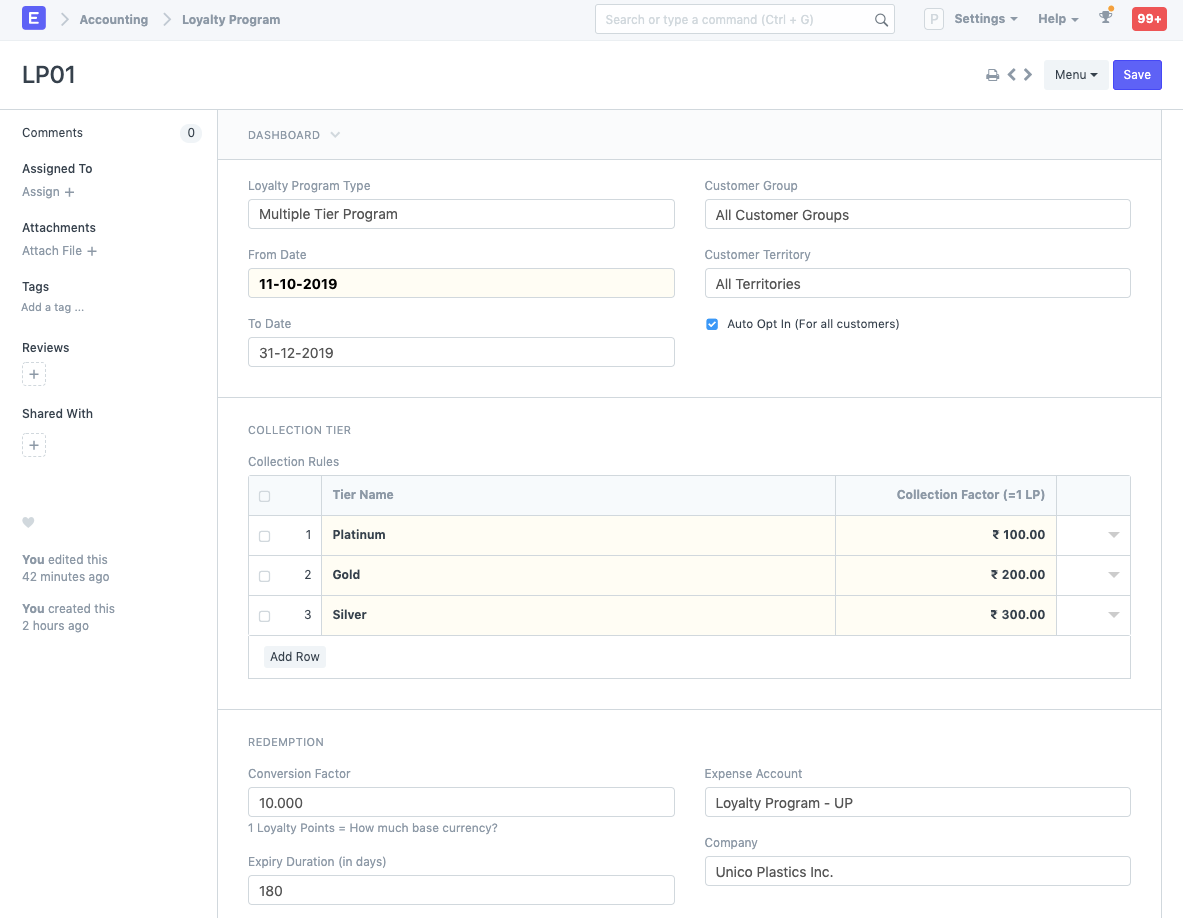
Support
Getting timely support for their problems is what will keep customers happy. Use issue logging, emails, and comment to collaborate, service level agreements to resolve problems on time, set touchpoints, view reports, and more.
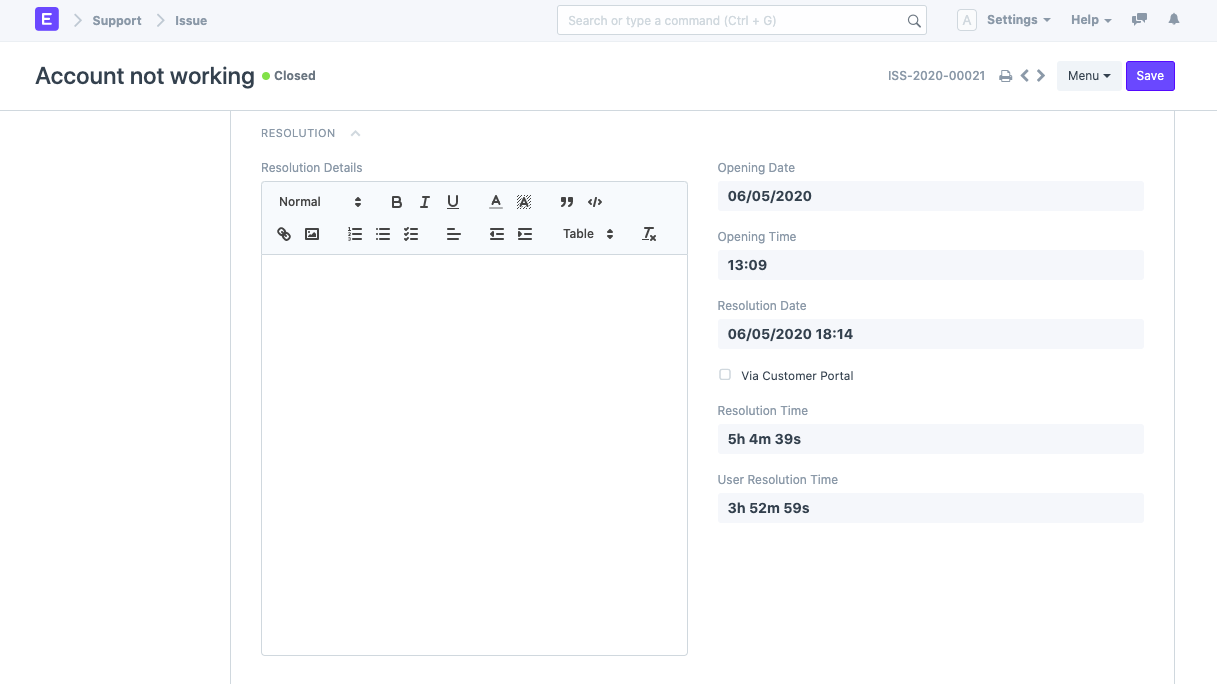
Conclusion
There we have it. We saw the important touchpoints in creating and maintaining relationships with your customers. Remember that merely creating customer relationships doesn’t cut it, you also need to maintain it with communication and timely service if you plan on keeping your customers.
Prasad Ramesh
Marketing at Frappe.
No comments yet. Login to start a new discussion Start a new discussion